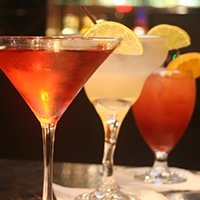- Guide to Spirits
- Distilling
- Spirit Types
- Producer Stories
- Cocktail & Martini Recipes
You might have a vague idea about the ingredients in your favorite spirits – say, that bourbon is made with corn or a cognac from grapes – but what is the process that turns the corn on the cob you’re envisioning into whiskey? It’s distilling.
Here’s how distillation works. The spirit-making process begins with base materials, which must either contain natural sugars (like fruit juice) or be converted into a sugary liquid called a mash . The mash or juice is then fermented to create the alcoholic wash, which is distilled , with its components heated and separated to concentrate the alcohol.
After distilling, a spirit may undergo aging, flavoring, coloring, or other tinkering to attain a specific style. Each step along the way involves choices that distillers make to affect the flavor, consistency and alcohol level of the final product you know.
The Base
The base material of a spirit is its backbone. Common materials used in distillation have typically reflected the history, culture and resources in the area where each spirit is made. Traditional base materials include:
- Grains and starches. Wheat, barley, rye, corn, rice and potatoes are used commonly to make whiskeys as well as vodkas and other neutral spirits.
- Fruit. Regions with winemaking histories traditionally produce spirits from grapes, first fermenting the fruit into wine and then distilling the wine into brandy. Other fruit-based brandies, known as eaux-de-vie, may be made from apples, cherries, pears, plums and more.
- Blue agave. Select regions of Mexico use this plant to make tequila, mezcal and other spirits.
- Natural sugars. In hot climates, distillers create rum and other spirits from sugar cane or the byproduct of sugar production, molasses.
The Mash
Base materials that are already sweet, such as fruit juice and molasses, are ready for fermentation, in which yeast converts the sugar into alcohol.
Grains and starches first require conversion of their starches into fermentable sugars. Distillers can convert many grains – including wheat, corn, and rye – simply by grinding them into a powder known as the grist, then mixing the grist with water to create the mash. The mash is heated in a vessel known as a mash tun, and the starches in the grains break down into the sugars needed for fermentation. The grain barley, used to make scotch and other whiskeys, requires additional steps known as malting to release sugars. The barley seeds are first soaked just to the point of germination, which develops enzymes that convert starch into sugar, then dried in a kiln. Then, like other grains, the barley is ground into grist and mixed with water to make the mash.
While the Scots and Irish make many whiskies with 100 percent barley, U.S. producers use a mixture of grains – malted and unmalted barley, corn, wheat and rye – to make a grist called a mash bill. Wheat and corn may also be malted, but American distillers commonly use a little malted barley in the mash for the enzymes.
Fermentation
Once the mash has sufficient sugar, or the fruit has been juiced, yeast is added to begin fermentation, converting sugar into alcohol. Yeast selection is key to shaping the style of the final product, as different yeast species produce different flavor profiles. Fermentation creates a number of alcohols, the most important of which is ethanol, the main component and most desirable alcohol found in wine, beer and spirits.
The temperature of the mix affects the development of congeners, the chemical compounds that add flavor and character to the spirit. Cooler fermentations take longer, leading to the development of more complex congeners – so more aromas and flavors. These congeners will develop and change during distillation and maturation as well.
The liquid emerging from fermentation is known as the wash.
Distillation
Distillation uses heat to separate various components of a liquid. It’s used to desalinate ocean water, to refine crude oil and to create your favorite spirits. In the production of spirits, it means separating alcohol and water in a still, using heat to concentrate the alcohol and other congeners in the wash.
Boiling the wash separates its components because different parts of the mix boil at different temperatures. The first vapors to emerge are called heads, the next are called hearts, and tails are last. Each contains a mixture of the substances found in the original wash, but at different concentrations.
The heads contain a higher concentration of components that boil at a lower temperature, which includes the unwanted alcohols, such as methanol. The hearts contain the steam with the highest concentration of the most desirable alcohols and congeners, such as esters that add floral and fruity notes to the mix. Tails include remaining water and other alcohols, including fusel oils – a small amount of which can add character to the spirit, but too much is toxic – and a lower concentration of ethanol and congeners.
The Still
The integral piece of equipment in this process is the still. Two general categories cover the many different types of stills used in spirits production: those that use batch processing, and those that perform continuous processing. Batch processing, using a traditional pot still, requires distillers to run the process once, remove the distillate, clean the still, and then start over with the distillate, repeating the process until the spirit reaches the desired purity level. Continuous or column stills, on the other hand, allow distillers to continually add the wash, which is processed through various tanks or columns, to produce a very pure product that does not need additional processing.
Post-Distillation Finishing
All spirits emerge from distillation as clear, colorless liquids, but their alcoholic strength and level of congeners depend on the base materials, fermentation techniques and specific distillation process. Batch processing in pot stills, for example, produces a distillate with lower alcohol, more congeners and character, while continuous distillation produces higher alcohol levels and a more neutral product.
Distillers may use additional ingredients to give color and flavor to some spirits. (See specific spirit types for details.) Brown spirits traditionally gain color and other characteristics from aging in wooden casks.
Distillers can age spirits in cask at full concentration (which may be as high as 95 percent alcohol, or 190 proof) and then add water just before bottling, or they might add water before cask aging and make any necessary adjustments before bottling. Evaporation during aging also reduces alcohol strength, releasing what distillers call the “angels’ share" of the spirit.
The choice of cask material – and whether the casks themselves are new or re-used, small or large, lightly toasted or heavily charred inside, affects the final spirit color and flavor. Wood origins matter as well, with American oak providing more vanillin and French oak imparting light vanilla and softer, spicy notes.
Aging for years at a time will concentrate color and flavor. The climatic conditions where spirits age also impact the final flavor profile. The heat of Kentucky, for example, produces faster maturation and more extraction of flavor from whiskey barrels than the cooler, damper weather in Scotland.
Finally, before or after maturation, producers may blend spirits for additional refinement and balance of style and flavor. Sometimes this means blending from various casks within a single distillery. Or, as in Scotland and Ireland, it often means blending spirits from various distilleries. When the blend includes components from various years, the age listed on the bottle is from the youngest spirit in the blend. Whiskeys made from malted barley from a single distillery bear the label “single malt." Once bottled, spirits, unlike wine, do not evolve with age, although they can last a long time when stored properly.
For more on the distillation process, pick up a free hard copy of our Guide to Spirits & Cocktails at any Total Wine & More store.



